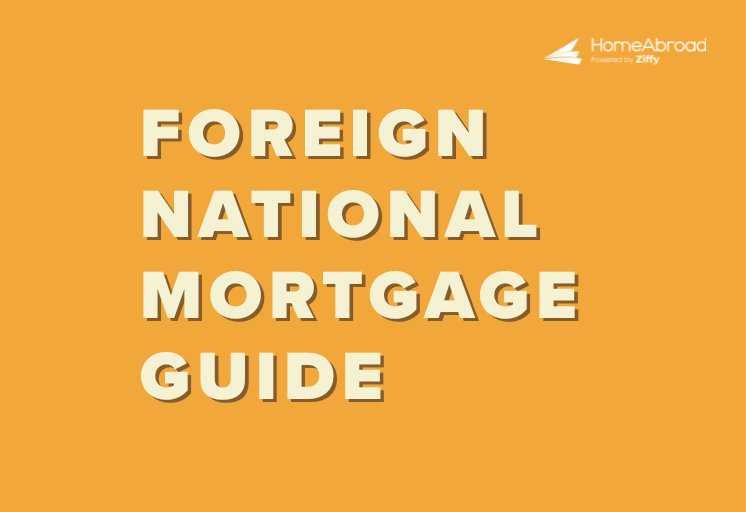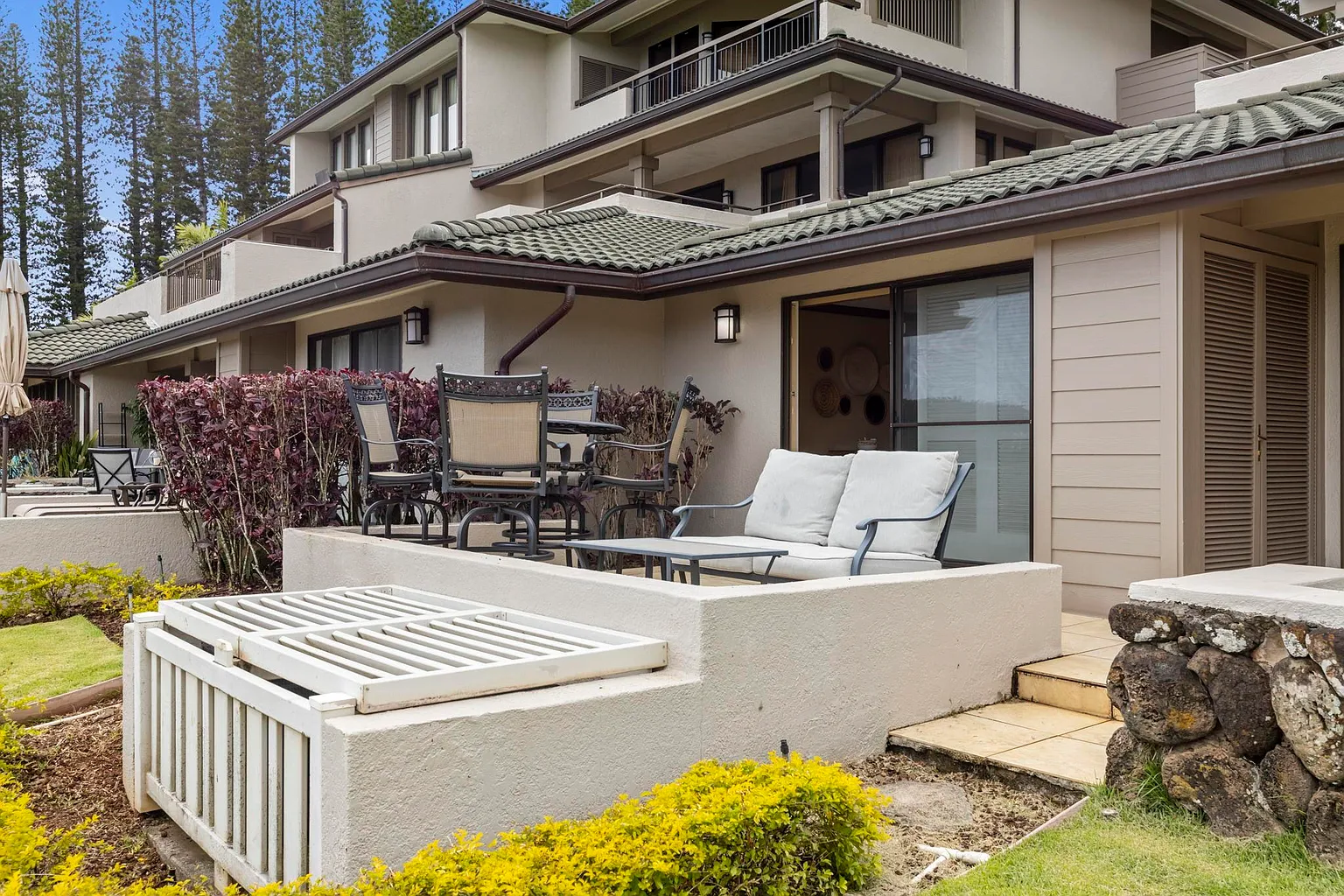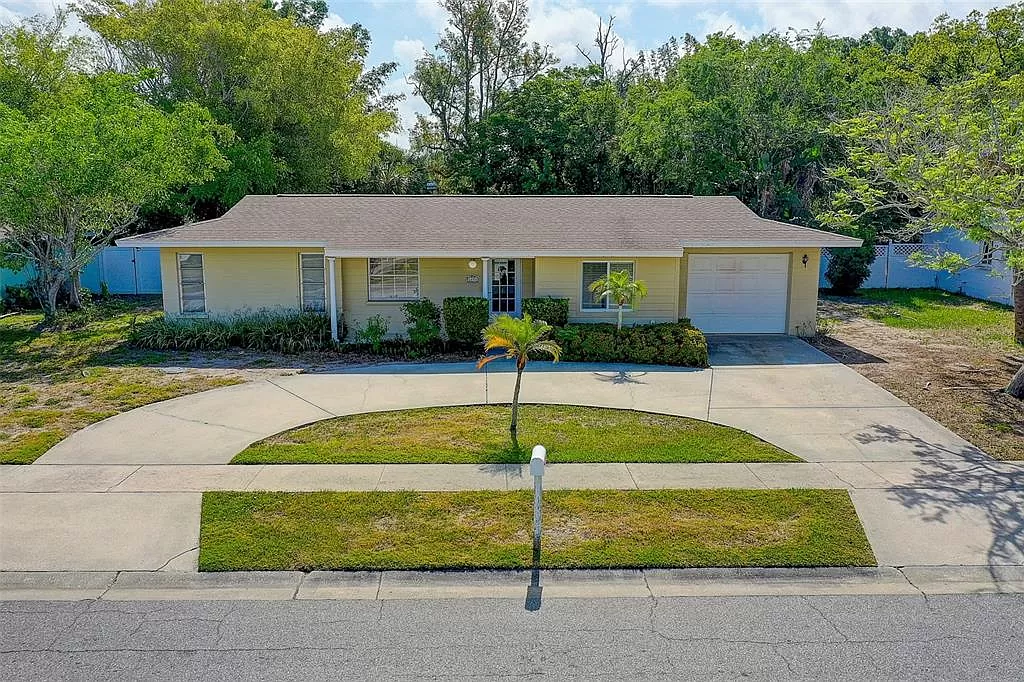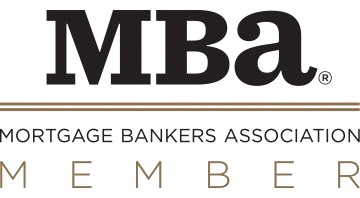Editorial Integrity
Making informed real estate decisions starts with having the right knowledge. At HomeAbroad, we offer US mortgage products for foreign nationals & investors and have a network of 500+ expert HomeAbroad real estate agents to provide the expertise you need. Our content is written by licensed mortgage experts and seasoned real estate agents who share insights from their experience, helping thousands like you. Our strict editorial process ensures you receive reliable and accurate information.
When it comes to getting a mortgage in the United States, there are two main types of applicants: Permanent Residents and Non-Permanent Residents. If you are a permanent or non-permanent resident alien in the US, there are different mortgage options available to you.
Permanent resident aliens have the option of obtaining a “green card” mortgage, while non-permanent residents have the option of obtaining a “foreign national mortgage“. Both types of mortgages have their own benefits and drawbacks, so it is essential to understand which one is best for you. This blog will explore the differences between permanent and non-permanent resident alien mortgages in the US and will help you decide which one is right for you.
Whether you’re a “green-card” holder or living in the US on a temporary visa, buying a home is a significant milestone and one that raises different questions depending on your residency status. If you are a permanent resident alien (i.e., you hold a US lawful permanent resident card) or a non-permanent resident alien (for example, you’re on a work visa or other temporary status), understanding how mortgage options differ can save you surprising time, cost, and unnecessary headaches.
Key Takeaways:
1. If you’re a permanent resident alien (green card holder), lenders often treat you similarly to a US citizen when it comes to many conventional mortgage programs. But non-permanent residents (those on temporary work visas or other limited-duration statuses) face stricter eligibility criteria and stringent regulations.
2. Some government-backed programs are no longer available to non-permanent residents. For example, as of May 25, 2025, the Federal Housing Administration (FHA) will not allow non-permanent residents to secure FHA-insured loans.
3. But with HomeAbroad, non-permanent residents (or foreign nationals) can now avail tailored programs (such as “foreign national mortgages”) that allow borrowers without a US credit history or traditional income and employment verification to qualify by using international credit reports, assets, or just rental income.
Table of Contents
What is the Difference Between a Permanent and a Non-Permanent Resident Alien?
In the United States, there are two sorts of non-citizens: Permanent Resident Aliens and Non-Permanent Resident Aliens.
Permanent Resident Aliens
Permanent resident aliens have both a social security number and a green card from the United States Citizenship and Immigration Services (USCIS), which equates to permanent residency; non-permanent resident aliens have only a social security number and no green card.
Permanent resident aliens can get a mortgage in the United States relatively easily because they only need to present a valid green card and their Social Security number, along with other standard documentation. The qualification process is very similar to that of a US citizen.
Non-Permanent Resident Aliens
Non-permanent resident aliens, on the other hand, must demonstrate that they intend to live in and utilize the home they are purchasing as their principal residence. They must present their work permit, commonly known as the Employment Authorization Document (EAD), along with their Social Security number.
If the borrower does not have an EAD, he can present a special employer-sponsored visa as proof of lawful status. Acceptable visas include the H-1B and other H-series visas such as H-1C, H-2, H-3, and H-4; the Canadian and Mexican NAFTA series; and the E, G, L, NATO, and O series.
All work eligibility documentation must demonstrate the borrower’s capacity to live and work in the United States for at least three years. Depending on your situation, you may be asked to provide additional paperwork for mortgage approval. Depending on your specific situation, your lender may also request additional paperwork to support your mortgage application, such as proof of income continuity, confirmation of your intent to remain in the US, or a letter from your employer.
In addition, the Significant Presence Test may be used by the IRS to determine whether a foreign individual qualifies as a resident or non-resident for US tax purposes. This classification can impact not only your tax obligations but also how specific lenders view your long-term financial stability in the country.
For international buyers and non-permanent residents who do not meet standard residency requirements or have limited to no US credit history, HomeAbroad offers specialized Foreign National Mortgage programs, making homeownership more achievable for global investors living in the United States.
Permanent and Non-Permanent Resident Alien Mortgage Options
The type of mortgage you are eligible for depends on your residency status. Here’s a look at the differences between permanent and non-permanent resident alien mortgages in the US.
Permanent Resident Alien
If you are a permanent resident of the United States, you are considered a “lawful permanent resident” or “resident alien.” This means that you have been given the right to live and work in the US indefinitely.
- Permanent Resident Aliens have good credit scores and steady incomes, making them ideal candidates for a mortgage.
- You are also eligible for most government benefits, including Social Security and Medicare.
- Permanent residents can apply for a Conventional Loan. This is a type of loan that the government does not back. Conventional mortgages typically have lower interest rates and down payment requirements than government-backed loans.
- To qualify for a traditional mortgage, you will need a good credit score and steady income. You will also generally need to make a down payment of at least 5% of the home’s purchase price.
Non-Permanent Resident Alien
If you are not a permanent resident of the United States, you are considered a “non-resident alien.” This means that you do not have the right to live and work in the US indefinitely. You may also be ineligible for some government benefits.
- Non-permanent resident aliens might not have a good credit score, making it more challenging to qualify for a mortgage. In addition, they may not be eligible for some government benefits. But here’s the good news: HomeAbroad offers foreign national loans with no US credit history required. Contact us for a quick quote and preapproval.

Pre-qualify for a US mortgage as an international buyer.
No US credit history needed.
FHA Loans (Federal Housing Administration loans) were once a popular choice for non-permanent residents in the US. However, non-permanent residents are no longer eligible for new FHA loans unless their case number was issued before May 25, 2025, as per the latest FHA guidelines. Non-citizens must provide documentation of their lawful residency and work authorization from USCIS, though individuals with refugee or asylee status do not need an Employment Authorization Document (EAD).
Qualify For a Mortgage: Permanent VS Non-Permanent Resident Alien Mortgage
When a consumer applies for a home loan, mortgage lenders require numerous documents. They must first ensure the prospective homeowner can afford the monthly mortgage payments.
When applying for a home loan, a permanent resident foreigner can anticipate providing:
- Their current green card and Social Security card. They can also use their passport and stamped I-551 documents instead of their green card.
- proof of income
Non-permanent resident aliens must submit:
- Social Security Number
- Employment Authorisation Document (EAD)
- Proof of income
- Ability to make mortgage payments.
- Visa Status
Lenders generally also require the following documents:
- W-2 forms (for the last two years)
- Employers for the past two years (names and addresses)
- Pay stubs for the most recent month
- 2 months of bank statements, which include all pages
- Tax returns for the last two years
- A profit and loss statement (P&L) for the current year, if you’re self-employed
- Proof of other income, such as alimony and child support
- Investment account statements (savings, retirement accounts, brokerage accounts, etc.) to show proof of down payment and ability to repay the loan
- Proof of steady payment of bills (example: utility bills, rent)
For more details, refer to HomeAbroad’s mortgages for non-US residents and learn how to qualify with utmost ease and convenience.
What Are the Types of Mortgage Loans Options For Permanent and Non-Permanent Resident Alien Homebuyers?
All common mortgage types (conventional, FHA, and Foreign National mortgages) are available to permanent and non-permanent resident aliens.
Some mortgage options available for them are:
Bank-Granted Home Loans
Green card holders and Permanent Resident Aliens, unlike non-US nationals living in the US on a work visa, can borrow money from local banks.
In addition, unlike visa holders, permanent residents are more likely to obtain mortgage approval. Again, this is because you are a permanent resident of the United States, and lenders are more certain that you will not leave the country. As a result, they are less eager to lend money to a green card holder.
The most common type of bank-granted home loan for permanent residents is a conventional mortgage. A conventional loan is not backed or insured by the government and usually has stricter requirements than other types of loans.
FHA (Federal Housing Association) Mortgages
The Federal Housing Administration (FHA) is a federal agency that insures mortgages issued by FHA-approved lenders. First-time homebuyers prefer FHA loans because they often require a lower down payment and a lower credit score than conventional mortgages. However, they are not available only to first-time buyers; anyone who meets the qualifying criteria can apply for an FHA loan.
FHA Loans are simple, specialized loans that require a 3.5% down payment. Their credit standards are significantly easier than those of their traditional counterparts. Your proof of residency should be valid for at least one year following the loan’s projected closing date.
While the federal government offers various house loan options, permanent residents commonly use one of two:
Fannie Mae: a government-sponsored enterprise that assists lenders in purchasing their loans. This allows lenders to lend more money, helping individuals buy homes.
Freddie Mac: A similar company that helps people obtain low-interest loans to purchase homes.
Conventional Loan
A Conventional/Conforming loan is a mortgage loan that follows the rules established by government-sponsored businesses, i.e., Fannie Mae and Freddie Mac. Interest rates on conforming loans are typically cheaper. To qualify for a conventional mortgage, you will generally need a credit score of at least 620 and a down payment of at least 20%.
The government has guidelines stating that it is the lender’s responsibility to prove that their borrowers are legally permitted to live in the country. This is particularly important for foreign buyers.
Borrowers of conventional mortgages, such as Freddie Mac and Fannie Mae, must provide:
- They need their social security number,
- Proof of residency, and
- Proof of income for at least three years.
- For a VA or conventional loan, the INS requires a valid visa and an EAD, which can be either an I-765 or an I-766.
- You may also be required to present Form I-797A along with your I-94 or another valid work permit.
Non-Conforming Loans
A non-conforming loan is a loan that does not meet Fannie Mae or Freddie Mac guidelines. The most common reason for a non-conforming loan is that the loan size exceeds conforming loan limits.
Because non-conforming loans are easily sold in the secondary mortgage market, they often carry higher interest rates. It may be used to purchase a primary residence, a second home, or an investment property.
A non-conforming loan may require a down payment of more than 20%, making it more expensive. A non-conforming loan may also have higher credit score requirements. Jumbo loans are an example of a non-conforming loan.
Foreign National Mortgages for Non-Permanent Resident Aliens
HomeAbroad offers four types of mortgages for non-permanent resident aliens who don’t have permanent residency or are new to the US on a temporary visa: Full Documentation Loans, DSCR (Debt Service Coverage Ratio) Loans, Fix-and-Flip Loans, and Bridge Loans.
Now, let’s examine these loan programs in detail.
1. Full documentation loan
A Full Documentation Loan is a loan option for US newcomers and foreign investors with no US credit history. It requires extensive documentation to verify income, assets, employment status, and debts.
As US credit history is not available, we will require an International Credit Report (ICR) from your country of origin to assess your creditworthiness and financial history.
We also accept a bank reference letter or a history of payment on two tradelines, such as a credit card or mortgage, in the applicant’s home country, as an alternative to a credit report from that country.
2. DSCR Loan
A Debt Service Coverage Ratio (DSCR) loan is a US mortgage program designed for international real estate investors who may not have a US credit history.
DSCR loans consider rental income from the investment property rather than the borrower’s personal income to cover mortgage and debt obligations, making it easier for foreign investors with no financial footprint in the country to qualify. This means that no individual income or employment documentation, such as W-2s, pay stubs, tax returns, or income verification, is required to qualify for these loans.
With these unique features and qualification methods, DSCR loans are a convenient mortgage option in the US for foreign investors looking to invest in US real estate and grow their investment portfolio.
3. Fix and Flip Loan
Fix-and-Flip Loans are for global real estate investors with no US credit looking to purchase, renovate, and resell properties for profit. These short-term loans finance property purchases and renovations, enabling investors to capitalize on rising property values.
4. Bridge Loan
Bridge Loans are short-term financing solutions for international real estate investors needing immediate funds to bridge the gap between selling an existing property and purchasing a new one. They offer quick access to capital, even without a US credit history.
HomeAbroad simplifies the mortgage process and eases your investment journey for first-time investors. We offer the best loan terms and experienced mortgage officers who specialize in working with foreign nationals, ensuring an effortless financing process.
Steps to Apply for a Mortgage Loan in the US
Steps for Permanent Resident Aliens to Apply for a Mortgage Loan
Here is a step-by-step process to apply for a mortgage loan for your house as a permanent resident:
- Fill out an application form
- Attach and submit the required documents to the lender
- Pay the costs and fees involved in getting the mortgage
- Wait for pre-approval and processing of your application
- A legal site check will be done on the property
- Sign a check to process the property papers
- Sign the final deal and agreement papers
To learn about these steps in detail, you can refer to this Guide On Green Card Mortgages.
Steps for Non-Permanent Resident Aliens to Apply for a Mortgage Loan
Here is a step-by-step process to apply for a mortgage loan for your house as a non-permanent resident alien:
- Complete the loan application form
- Submit your documents
- Pay any required processing fee
- Wait for your preapproval or approval to come
- Processing of your offer letter
- Followed by a legal check, the property papers will be processed.
- Technical Checking And Site Estimation: What and how the property’ condition is
- Signing the final loan deal
- Sign the agreement
Refer to this guide (Guide to Foreign National Mortgage Loans with No US Credit History) to get detailed information on the outlined steps.
How Does Interest Rate Compare for Both Types of Mortgages?
Permanent residents can take advantage of lower interest rates than non-permanent residents. To get the best mortgage terms, a high credit score is needed, along with other factors such as employment history and the size of the down payment.
Permanent residents have an advantage when it comes to qualifying for a home mortgage. In addition to typically lower interest rates, permanent residents also have access to a broader range of loans. While non-permanent residents may be able to qualify for some types of loans, their options will typically be more limited.
If you are a non-permanent resident interested in purchasing a home, it is still possible to get a mortgage. You will likely have to pay a higher interest rate, and you might need to make a larger down payment than what is required for a permanent resident.
Check the current foreign national mortgage rates to gain clarity on your future investment and accomplish your investment goals with confidence. It is important to compare mortgage options and shop around for the best rates before making a decision.
HomeAbroad specializes in providing US mortgages to foreign nationals, including expats, newcomers, and non-resident investors for primary residences, second homes, or investment property. Get a quote today!
Frequently Asked Questions
How long can I stay in the United States if I own property?
Buying a home in the United States does not ensure permanent residency. Instead, the amount of time you can stay in the nation is decided by your visitor visa or an employment-based visa, such as the B1 (business visa) or B2 (visitor visa), which is usually valid for six months and can be extended.
Other visas, such as the H1-B, allow foreign nationals to work and live in the United States for a few months or years. You can get more information about your stay from the US Department of State.
Since Covid and other visa waiver programs are not permitted to extend visas beyond 90 days, the US Citizenship and Immigration Services has established special procedures for such visitors to obtain an “extension of satisfactory departure” for up to 30 days.
What Visas are Eligible to Get a Mortgage in the US?
Non-permanent resident aliens who intend to live in the home they are purchasing can qualify for a mortgage. In other words, they make their primary habitation at home.
When applying for a mortgage, lenders recognize the following visas as proof of legal residency:
H-1B and other H series visas such as H-1C, H-2, H-3 and H-4
E series
G series
L series
O series
NATO series
Canadian and Mexican NAFTA series
Any work eligibility document must indicate the applicant’s ability to live and work in the United States for at least three years. Each lender will request documentation based on its own guidelines and the borrower’s situation.
How long does it usually take to get approved for a non-resident alien mortgage?
At HomeAbroad Loans, we streamline the application process of your foreign national mortgage to ensure a smooth experience from loan application to closing. We guarantee that the closing will happen within 30 days.
At HomeAbroad, we ensure the reliability of our content by relying on primary sources such as government data, industry reports, firsthand accounts from our network of experts, and interviews with specialists. We also incorporate original research from respected publishers when relevant. Discover more about our commitment to delivering precise and impartial information in our editorial policy.




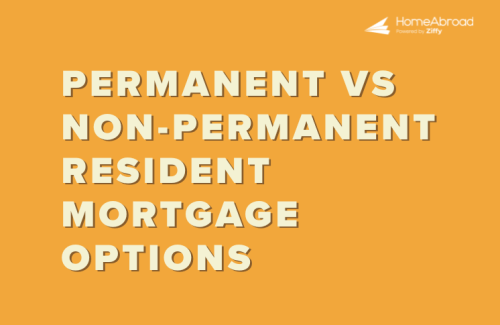




![Can Foreigners Buy Property in the USA? [2025]](https://homeabroadinc.com/wp-content/uploads/2021/07/CanForeignersBuyinUS.jpg)
